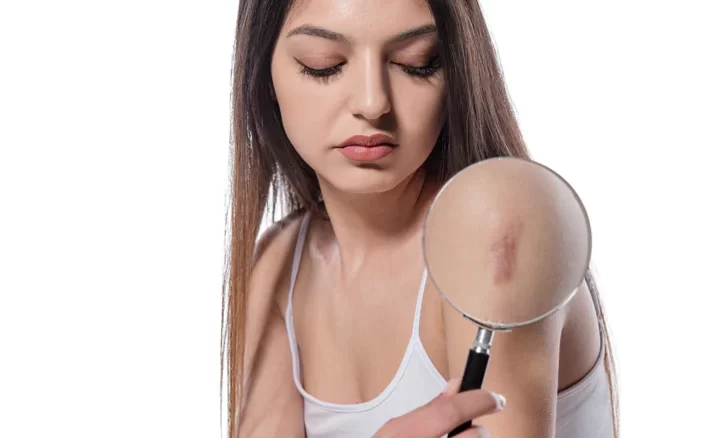How to Get Rid of Keloid Scars
For some of us, the mark that is left behind will not go away even though time may have healed the wound. The opposite scenario happens in the case of keloid scars. These scars can expand past the location of the original wound. In addition to being unsightly, they can also be painful, uncomfortable, and restrict movement.
In the majority of cases, our body leaves a mark after a wound has healed. However, our body does not stop its cellular skin-repair processes in the case of keloid scars. Due to the overgrowth, shiny pink skin-colored or purple skin swells up above and beyond the boundaries of the wound. We’re still learning about the cellular malfunction that results in this uncontrolled development.
Keloids can be caused by an injection, a piercing, a tattoo, or a wound. Long after the original wound has recovered, the scar overgrowth can develop and may continue to spread over time. Most of the time, they don’t improve on their own.
By nature, keloids are not harmful. However, the way they look can be unsightly. They might also be sensitive, painful, and irritating. Furthermore, they might restrict movement based on their size and location.
Keloids pose a difficult dermatologic challenge because they are likely to recur if cut off. In order to provide patients the confidence to make wise decisions, we must assist them in navigating an overwhelming number of treatment alternatives.
Recommendations for Treating Keloid Scars
Keep in mind how keloids develop: The majority of keloid scars are caused by some kind of injury to the skin. This is important for comprehending treatment options as well as other life decisions, such as whether to get a tattoo or a piercing, for someone prone to this condition.
Think about your choices carefully: Lasers, chemical and steroidal shots, freezing procedures, and radiation procedures are the wide range of treatments available for keloid scars. Patients must work with their medical professionals to determine which is best for their specific situation. Whether the wound is in its early or late stage, its size and position all affect how the best course of action is developed. The type of treatment needed also relies on whether the patient wants to only get rid of the discomfort and itchiness, or if they also want to get rid of the keloid scar completely.
Understand the use of mixed therapies: The scar’s appearance can be fixed with a mix of therapies, which could also prevent future regrowth. For example, cryotherapy, which uses freezing temperatures to reduce the scar, is often utilized in conjunction with steroidal injections. To enhance the outcomes, we might also administer a mixture of different kinds of steroids, anesthetics, and immunosuppressants.
Pick Your Treatment Specialist Carefully: Patients who are not properly managed risk developing additional scarring or experiencing a series of disappointing results. Additionally, it’s critical that your doctor is up to date on the most recent approaches because research is still ongoing and new treatments are constantly being developed.
Take precautions to avoid getting additional scars: Patients who are prone to developing keloid scars should avoid getting tattoos and body piercings. Patients should work with their medical professional to develop a post-operative plan to reduce scarring if surgery is required.
Get Expert Keloid Scars Treatment at Skin City
The good news is that as we learn more about keloids, we can help people with greater success. Our clinic is one of the top dermatologist facilities in the nation with highly skilled medical experts in the areas of cosmetic and laser dermatology as well as cutting-edge medical technology. Our Keloid Specialist in Aundh Pune can provide you with state-of-the-art treatment care for keloid scars and have years of expertise treating keloid scars. Get in touch with us today and get expert medical care for your skin concerns.

